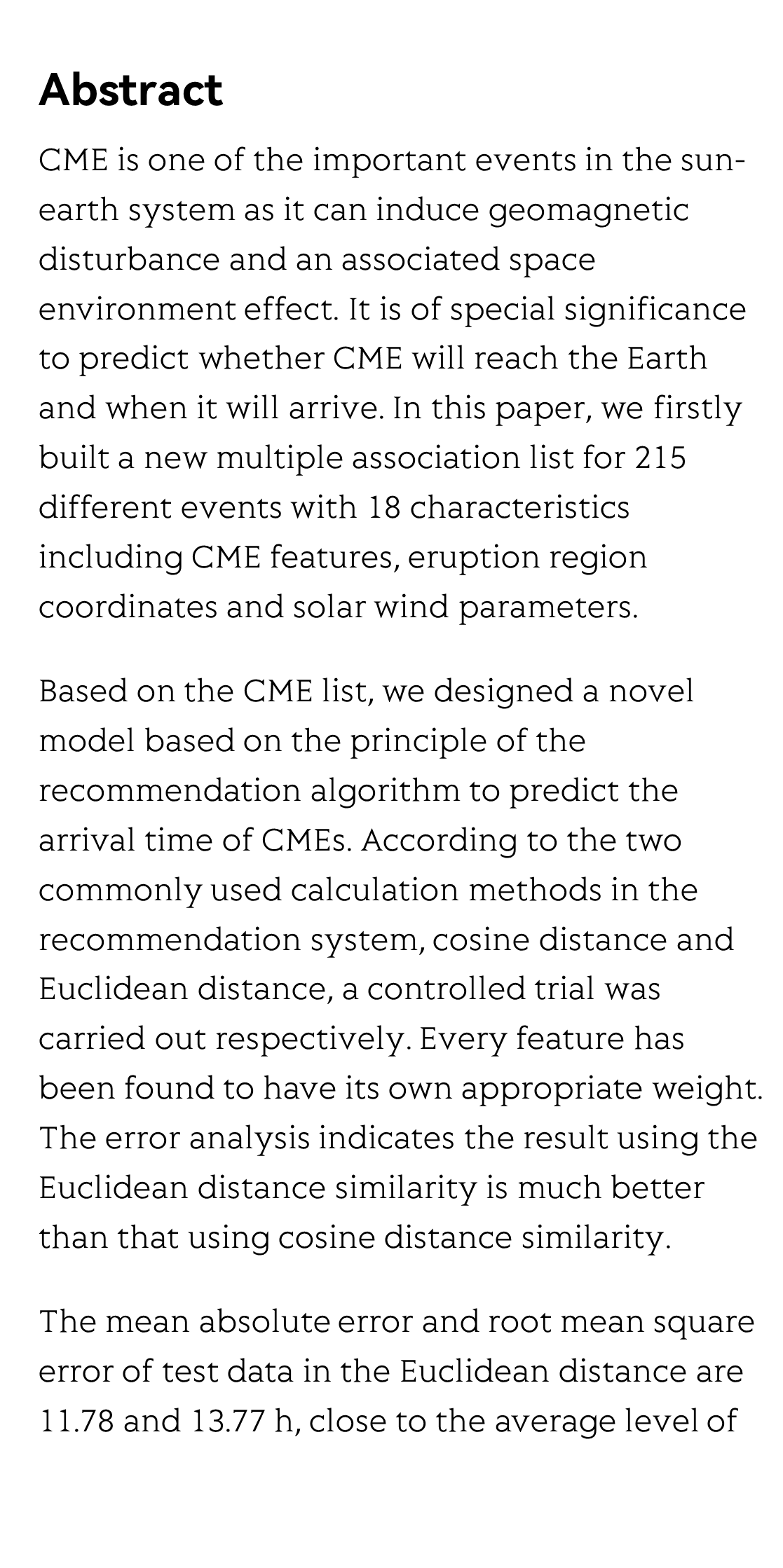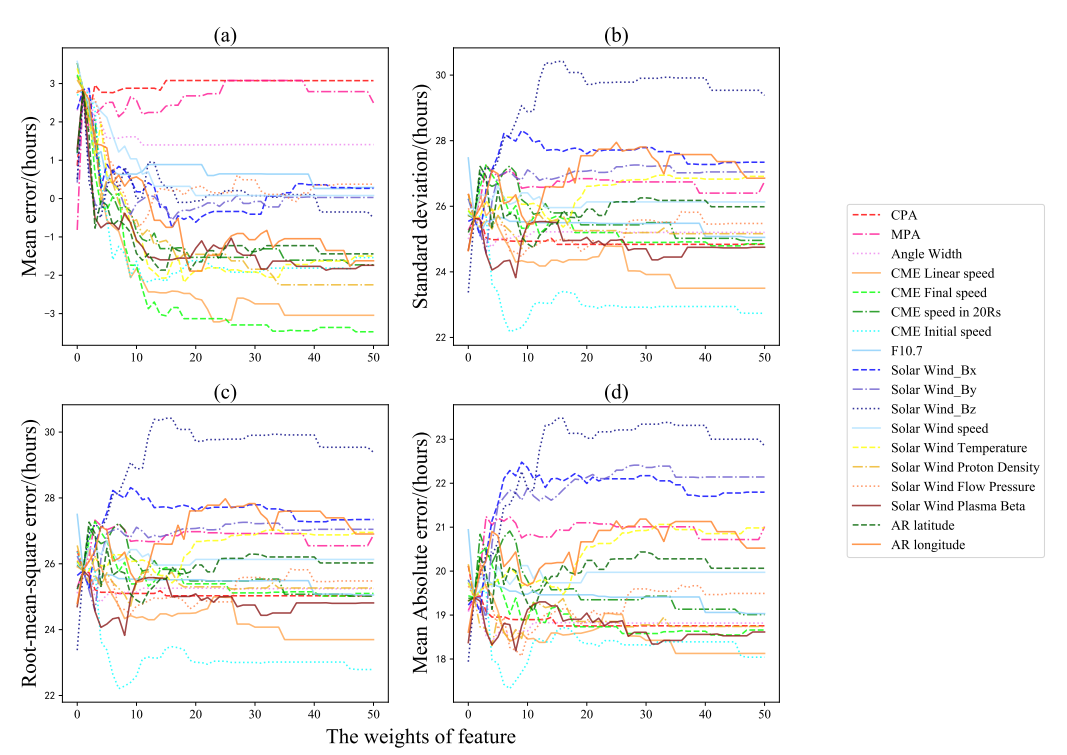(Peer-Reviewed) Predicting the CME arrival time based on the recommendation algorithm
Yu-Rong Shi 石育榕 ¹ ² ³, Yan-Hong Chen 陈艳红 ¹ ³, Si-Qing Liu 刘四清 ¹ ² ³, Zhu Liu 刘柱 ⁴, Jing-Jing Wang 王晶晶 ¹ ³, Yan-Mei Cui 崔延美 ¹ ³, Bingxian Luo 罗冰显 ¹ ² ³, Tian-Jiao Yuan 袁天娇 ¹ ³, Feng Zheng 郑锋 ⁴, Zisiyu Wang 王子思禹 ¹ ² ³, Xin-Ran He 何欣燃 ¹ ² ³, Ming Li 李铭 ¹ ² ³
¹ National Space Science Center, Chinese Academy of Sciences, Beijing 100190, China
中国 北京 中国科学院国家空间科学中心
² University of Chinese Academy of Sciences, Beijing 100049, China
中国 北京 中国科学院大学
³ Key Laboratory of Science and Technology on Environmental Space Situation Awareness, Chinese Academy of Sciences, Beijing 100190, China
中国 北京 中国科学院空间环境态势感知技术重点实验室
⁴ Department of Computer Science and Engineering, Southern University of Science and Technology, Shenzhen 518055, China
中国 深圳 南方科技大学计算机科学与工程系
Research in Astronomy and Astrophysics (RAA)
, 2021-03-17
Abstract
CME is one of the important events in the sun-earth system as it can induce geomagnetic disturbance and an associated space environment effect. It is of special significance to predict whether CME will reach the Earth and when it will arrive. In this paper, we firstly built a new multiple association list for 215 different events with 18 characteristics including CME features, eruption region coordinates
and solar wind parameters.
Based on the CME list, we designed a novel model based on the principle of the recommendation algorithm to predict the arrival time of CMEs. According to the two commonly used calculation methods in the recommendation system, cosine distance and Euclidean distance, a controlled trial was carried out respectively. Every feature has been found to have its own appropriate weight. The error analysis indicates the result using the Euclidean distance similarity is much better than that using cosine distance similarity.
The mean absolute error and root mean square error of test data in the Euclidean distance are 11.78 and 13.77 h, close to the average level of other CME models issued in the CME scoreboard, which verifies the effectiveness of the recommendation algorithm. This work gives a new endeavor using the recommendation algorithm, and is expected to induce other applications in space weather prediction.
Flicker minimization in power-saving displays enabled by measurement of difference in flexoelectric coefficients and displacement-current in positive dielectric anisotropy liquid crystals
Junho Jung, HaYoung Jung, GyuRi Choi, HanByeol Park, Sun-Mi Park, Ki-Sun Kwon, Heui-Seok Jin, Dong-Jin Lee, Hoon Jeong, JeongKi Park, Byeong Koo Kim, Seung Hee Lee, MinSu Kim
Opto-Electronic Advances
2025-09-25
Dual-frequency angular-multiplexed fringe projection profilometry with deep learning: breaking hardware limits for ultra-high-speed 3D imaging
Wenwu Chen, Yifan Liu, Shijie Feng, Wei Yin, Jiaming Qian, Yixuan Li, Hang Zhang, Maciej Trusiak, Malgorzata Kujawinska, Qian Chen, Chao Zuo
Opto-Electronic Advances
2025-09-25







